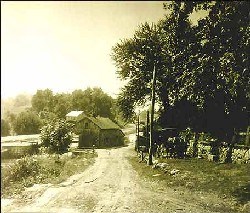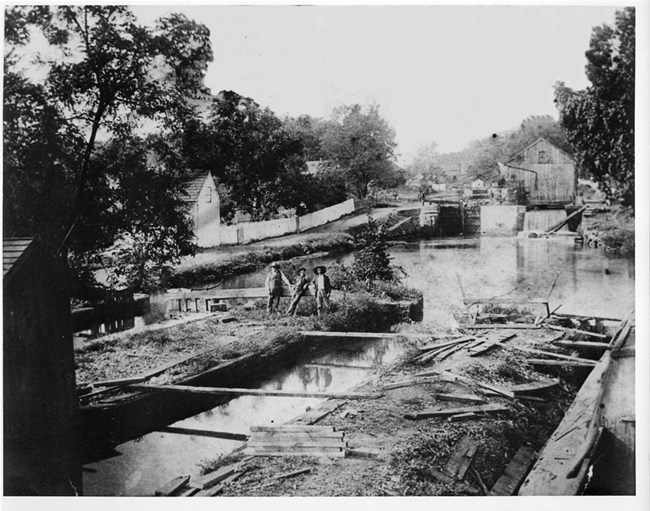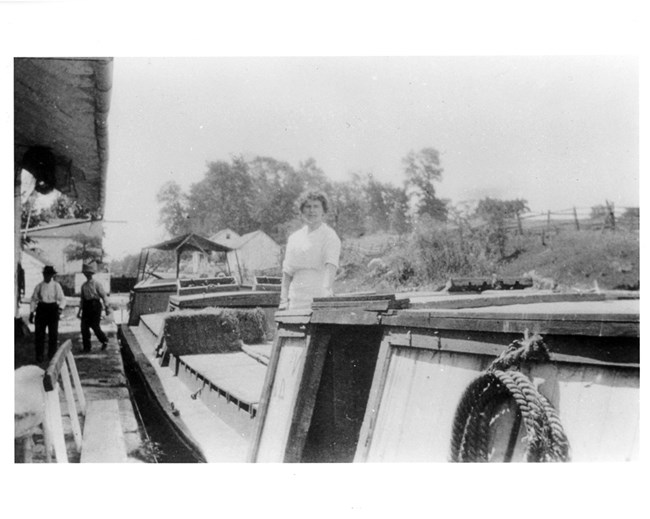
NPS Photo 
Locks 47-48In order to bypass four miles of winding Potomac River, a one mile shortcut through Prather’s Neck was built. This shortcut required the construction of four locks to handle the 32-foot difference in elevation. Lock 47 is at the lowest elevation of the four locks. A dry dock used for canal boat repairs was located over the flume next to the lock. Similar to locks, a boat could be floated into them through an upstream gate, after which the gate would be closed and a sluice gate opened at the downstream end to drain the dry dock. The boat would settle down on raised beams as the water level dropped, allowing workmen to crawl under as well as around the boat to make the necessary repairs. Just like today, different stores supplied Four Lock residents with different items for their survival. Penny candy, stove polish, thread, hats, shoes, molasses, kerosene, knitting needles – all and more could be purchased at the store once located over the flume at lock 48. Began in 1875 as a general store by James Flynn, it was sold one year later to the Smith brothers. In 1894 it was operated as the Snyder-Fersner Store. The property was leased from the Canal Company for $36 a year. Canaller Frank Zimmerman remembers the store’s hams as “the best around.” 
Living and working at Four LocksToday we call it ‘snail mail’ but during canal operations mail was the cheapest way to communicate long distance. The Four Locks Post Office was either in or located next to the Flory House. It operated here from 1878-1903. Of the eight postmasters, only one was a woman –Mrs. Mary Flory who served the longest term, eight years from 1885-1903.Unlike most other lock houses, lock house 49 was not situated right next to the canal. Being on call 24 hours a day seven days a week, it was easier to watch for oncoming boats from a watch shanty than from the lock house. Used by lock keepers to watch for canal boats, this watch shanty located at Lock 50 is the only one left standing on the canal. The lock keeper at Four Locks was paid $400 a year -$150 to operate one lock and $50 for each additional lock. In order to be able to operate the locks efficiently, others were hired and paid $50 for each lock operated. This kept boat traffic moving smoothly especially when there were ten or more boats waiting to lock through. During these waits, lock keepers helped pass along canal operations information to the Canallers. The C&O Canal telephone system built in 1879 was one of the first phone systems in Maryland containing 46 telephones. Over time more phones were installed with one inside Lock House 49. It was the fastest way to communicate along the canal. Getting HereLatitude and LongitudeDegrees Minutes Seconds (DMS): 39° 36' 52.83" N, 77° 56' 47.47" W GPSThere is a large parking lot off Starliper Road, search "Four Locks Boat Ramp" or follow the directions below. From Clear Spring, MD
|
Last updated: October 4, 2024
